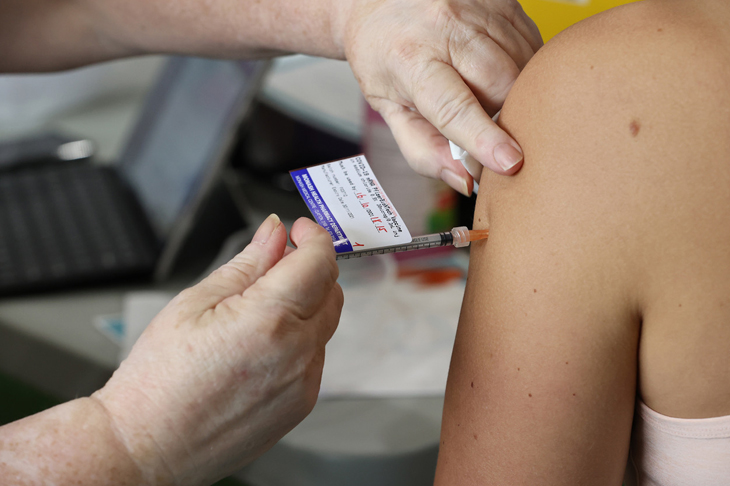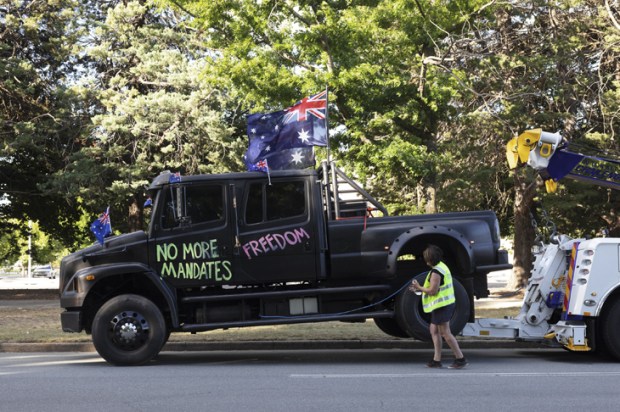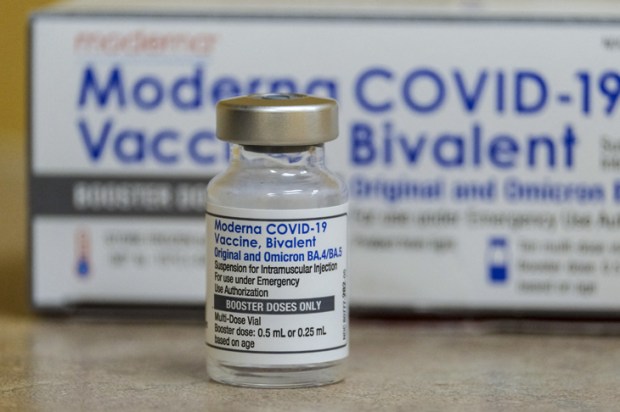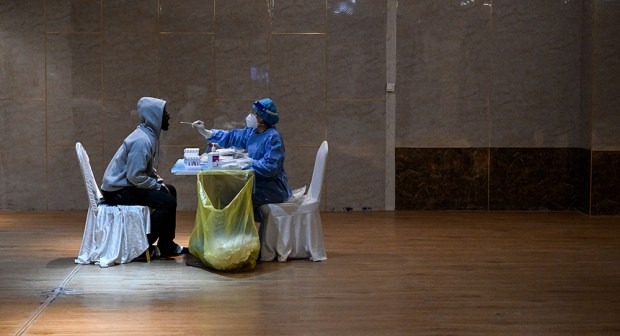When Victorian Premier Dan Andrews promised this week to continue to punish the unvaccinated well into next year, the #IStandWithDan brigade applauded as usual. Andrews has spent the last eighteen months blaming others for the course of the pandemic in his state; the unvaccinated are just the latest scapegoats. It was more disappointing that churches haven’t protested the exclusion of the unvaccinated. Clearly, Jesus reaching out to the lepers was not foremost in their thoughts. There has been a deliberate effort by governments to portray the unvaccinated as a threat to the community. Yet that is not what the evidence shows.
Vaccines do initially prevent people from catching Covid, but as the experience of Israel, the US and the UK attests, effectiveness begins to wane almost immediately. The latest UK data shows vaccine efficacy waning by around 5 per cent per week in double-vaccinated people over the last six weeks. Moreover, as efficacy declines, double-vaccinated people are more likely to catch Covid than the unvaccinated, with rates of infection in double-vaccinated people higher in every age group over 30. In those 30-39 years old, the infection rate is 824 per hundred thousand in the double-vaxxed compared to 710 in the unvaccinated, giving a vaccine efficacy rate of -16 per cent. This skyrockets to -109 percent in those aged 40-49 where the infection rate per 100,000 is 1,456 in the fully vaccinated and only 696 in the unvaccinated. For those aged 50-59, vaccine efficacy is -85 per cent, for those aged 60-69, it is -88 per cent, for those aged 70-79, it’s -79 per cent and for those aged 80 and over, it’s -22 per cent. This suggests that over time, vaccine-induced antibodies don’t simply dwindle to zero, they make the vaccinated person progressively more likely to catch Covid than the unvaccinated. It is not clear why.
The vaccinated are not just more likely to catch Covid, they are more likely to spread it. A study from the US Centers for Disease Control and Prevention (CDC) done in Wisconsin showed that vaccinated people have the same high viral loads as unvaccinated people when they are symptomatic, but a much higher percentage of vaccinated people (82 per cent) had high viral loads while asymptomatic compared with unvaccinated people (29 per cent). This means unvaccinated people are less likely to spread Covid than vaccinated people because the former are more likely to stay home in bed whereas the latter are much more likely to go to work. Another CDC study done in Barnstable County, Massachusetts, found that 74 per cent of those infected were fully vaccinated and on average they had higher viral loads than unvaccinated people who were infected.
This is particularly important for people working in health or aged care. A study just released from Israel described an outbreak in a hospital where a fully vaccinated patient infected 23 per cent of the patients and 10 per cent of the staff, even though 96 per cent of the people exposed were fully vaccinated. All staff were fully vaccinated and remained asymptomatic or with mild disease but eight fully vaccinated patients became severely ill and five died, whereas the two unvaccinated patients had mild infections. As the authors of the study wrote, the outbreak ‘challenges the assumption that high universal vaccination rates will lead to herd immunity and prevent Covid-19 outbreaks’. Moreover, the transmission between patients and staff occurred when the latter were wearing masks and full protective clothing.
The idea that vaccinations and masks are sufficient to prevent the spread of Covid is simply untenable. The only way to limit the spread of Covid is through testing. Yet it was only this week that Australia’s Therapeutic Goods Administration approved Covid-19 rapid antigen tests (RAT) that you can administer yourself and they will only be available for sale from 1 November, even though the tests were invented in Australia and have been available in the US since December 2020 and in the UK most of this year.
While vaccines still provide protection against hospitalisation and death the rate of protection is declining. The CDC reported an increase between January and May in hospitalisation in the vaccinated from 0.01 to 9 per cent and an increase in death in the vaccinated from 0 to 15 per cent. The latest UK data shows vaccine efficacy against death declines the older people are, presumably in part because efficacy wanes over time and the elderly were vaccinated first but also because the efficiency of the immune system decreases with age. In those 80 and over, vaccine efficacy against death is now 60 per cent. While this is still significant protection, more than 80 per cent of all people who died of Covid in the UK in the second quarter of the year (the most recent statistics) had underlying health problems – on average two – and more than 25 per cent of all those who died had diabetes. This, together with the small absolute number of deaths in the unvaccinated – 183 people aged 80 and over, 147 people aged 70-79 over the last month – suggests that a vaccination program more tightly focused on the vulnerable would have achieved similar results without the risk of side effects and deaths which continue to occur in healthy people who were unlikely to be at risk from Covid.
One thing is certain. The unvaccinated are in no way a threat to the vaccinated. All the evidence points to the opposite. After a brief honeymoon of a few weeks to months, the pandemic is driven by vaccinated rather than unvaccinated people. A study from the Harvard Centre for Population and Development shows that countries with a higher percentage of the population fully vaccinated have higher Covid-19 cases per 1 million people.
The persecution of the unvaccinated not only has no scientific basis, it is profoundly against the interests of society. Throughout the entire pandemic we have been told that sacrifices had to be made to avoid putting an intolerable strain on hospitals. How can we afford to sack thousands of highly skilled doctors, nurses, paramedics and other health and aged care workers? How can essential workers become expendable? How can the heroes who worked tirelessly throughout the pandemic be fired for refusing to take an experimental injection that demonstrably increases the spread of the pandemic, has been shown to be lethal in some healthy people in the short term, and may permanently damage the immune system?
Of course, the mandates aren’t confined to health and age care. This week, radio host Dan Bongino threatened to quit his highly-rated program if a vaccine mandate was imposed in the media company where he works. At last, a Dan with whom decent people can stand.
Got something to add? Join the discussion and comment below.
Get 10 issues for just $10
Subscribe to The Spectator Australia today for the next 10 magazine issues, plus full online access, for just $10.
You might disagree with half of it, but you’ll enjoy reading all of it. Try your first month for free, then just $2 a week for the remainder of your first year.














Comments
Don't miss out
Join the conversation with other Spectator Australia readers. Subscribe to leave a comment.
SUBSCRIBEAlready a subscriber? Log in